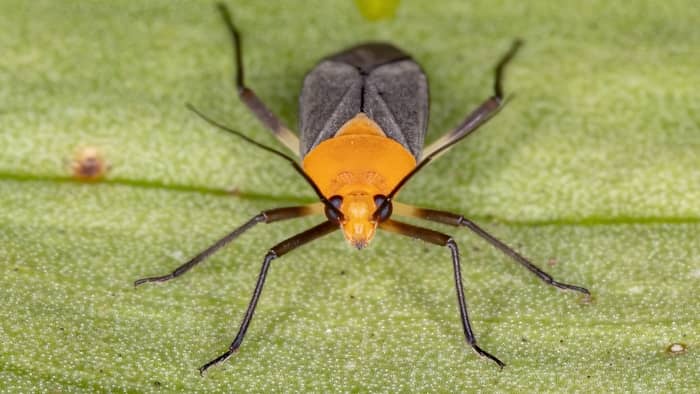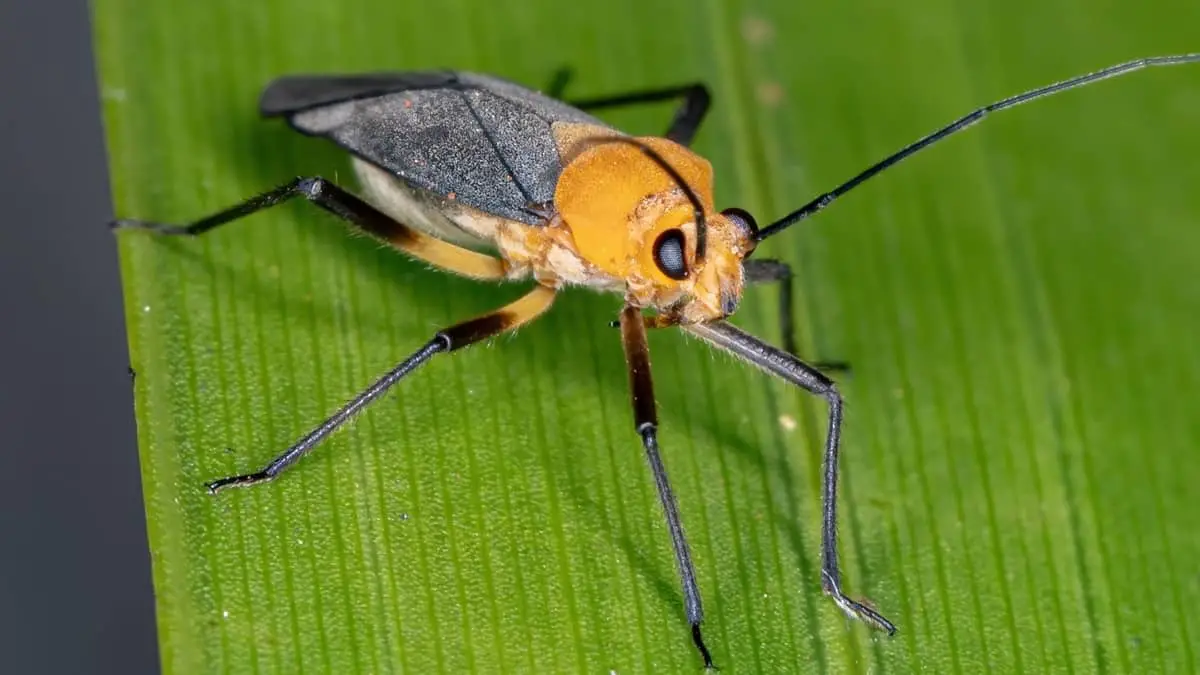Last Updated on September 10, 2022 by Griselda M.
The snake plant is a largely trouble-free plant – if you really take it out of its comfort zone it can become weak, and if this happens, it can become susceptible to insect infestation. In this article, we look at the mechanism of what weakens a plant, and how we can help a plant recover and stay strong so that it does not get infected again. Do snake plants attract bugs? No. Sick snake plants attract bugs. Keep a snake plant healthy, and you have a low-maintenance house plant.
Firstly, What is a Snake Plant and How Does It Work?
Snake plants, Dracaena trifasciata, are very popular house plants because they are nearly impossible to kill. These plants are naturally adapted to grow in tropical African woodlands – many of these woodlands have very poor quality soil, with a rapidly draining nature. To survive in this environment a plant needs to be tough.
The snake plant is tough – it has a huge rhizome that creeps along and can literally break rocks. It can store huge amounts of water in the rhizome. It uses crassulacean acid metabolism – CAM – photosynthesis – which makes it even tougher. This allows the plant to conserve water while photosynthesizing.
The actual process is rather inefficient, and because the plants are tropical, or sub-tropical they need a relatively long period of exposure to light – 10-12 hours. The light does not need to be intense, but it needs to be enough to drive photosynthesis. These are not plants that are adapted to grow in very cold weather they are by nature moderately cold tolerant but will thrive if the temperatures are between about 70°F and 90°F.
Understanding sap Brix and how this relates to snake plant health
A snake plant absorbs nutrients using its roots. These nutrients are transported to the photosynthetic leaves that use the nutrients, together with energy captured from the sun to drive the plant’s metabolism. Sugars are created, by using the sun’s energy, and CAM photosynthesis, and this sugar in turn is an energy molecule that can drive other processes in the plant that allow it to grow.
Brix is a measure of the concentration of things dissolved in water – based on sucrose sugar. However other salts and substances in plant sap affect sap, Brix. If you have a healthy plant, the Brix in the sap is often higher than about 12, and in a starving plant (one that is not getting enough light, heat, and nutrients) the Brix can go really low – down to about 2. These plants become disease magnets because they are half dead and do not have the energy to defend themselves.
In a snake plant, if it is not getting enough light, for long enough every day, it will not be able to send enough sugar down to its roots. The roots will start to suffer (even die) and the concentration of nutrients available to the plant will decline. The leaves are now starved of sugar and nutrients and cannot maintain the thickness of the cuticle. The plant does not have the energy to synthesize chemicals to defend itself and it becomes disease and pest prone.
Do Snake Plants Attract Bugs?
Healthy snake plants do not attract bugs!
In my experience, a healthy snake plant that gets at least 9-10 hours of light (does not have to be a very bright light, just light) and which is warm enough (70°F plus when it is in light) will be able to produce enough energy to be nearly pest free. There will always be some infernal creature that can attack a strong plant, but these are really few and far between.
Unhealthy snake plants attract bugs
When snake plants are in bad condition – not enough light, and low temperatures – they can get scale insects, mealy bugs and according to the internet – spider mites. I have literally never seen a spider mite on a snake plant in my 45 years on this planet, so I am going to discount that as an internet meme.
I think if we are to be realistic – the pests most likely to attack a snake plant that is in poor condition will be scale insects and mealy bugs because these pests just love to attack weak plants.
My Snake Plant is Unhealthy and Has Bugs, What Do I do?
Ok, so you have somehow managed to get your snake plant sick. It is covered in scale and mealy bugs and a few ants. What do you do?
Luckily a snake plant is quite easy to remove pests from! If you just take a simple pot scourer and a little bit of soapy water you can just wash the scale, mealy bugs, aphids, and ants off of the leaves. Now that you have eliminated the pests, you need to change the conditions your plant is exposed to so that it does not get further harassed.
Tips!
Tip 1: Increase photoperiod and light
To me, the most likely reason your plant probably has pests is due to low light (and possibly low temperature). A supplemental light in winter will really help keep your plant’s Brix levels in a healthy zone where it can resist pests. These are LED lights so they produce very little heat, but they do produce enough to lift your plant’s leaf temperature by a few degrees which helps too.
Tip 2: During winter, decrease the water
In winter, snake plants need less water – you can feel the soil and if it is damp, then that is probably a little bit more than it should be most of the time. Let the soil get dry, and then water it every 10 or so days. If the plants are a bit weak, and their roots are very wet, they will just end up with root rot.
Tip 3: Apply neem oil after cleaning leaves
After you clean the leaves, there is little harm that can occur if you spray a bit of neem oil. This will inhibit the regrowth of pests to a certain extent and may also help stop fungi from penetrating lesions in the leaves. I just find neem oil helps with many situations where plants get a bit weak.
The most important thing however is that you had a problem, and you increased the light – the neem oil is just a prophylactic treatment to help the plant get strong and use the increased light to build its immunity to pests.

Read more about Does Mulch Attract Snakes? And Other Wildlife – Find The Best Answer Here
Caring For Snake Plants
The snake plant, or Dracaena trifasciata, has become a popular houseplant due to its unusual appearance and the fact that it can be easily propagated from cuttings. In addition, this plant is drought-resistant and requires very little water. These characteristics make the snake plant an ideal plant for people who wish to garden indoors.
However, like all houseplants, snake plants are not suited to everyone’s living conditions and habits. Therefore, it is important to care for your snake plant so that you don’t have to worry about it dying. Here we will look at how to care for a snake plant properly.
-
Temperature
The best temperature for a snake plant is 75°F (24°C), but most people prefer their houseplants to be around 70°F (21°C). Snake plants are pretty resistant to higher temperatures. I have seen them survive temperatures well over 100°F, but they will die if they get exposed to black frost. If you live in an area where freezing temperatures are the norm for some months, you will need to bring the plants indoors for winter and provide supplemental lighting.
-
Watering
The amount of water your snake plant needs varies depending on where you live and what kind of soil you use. In general, it can survive with just one good watering per two weeks. You can water your snake plant using a regular watering can or by a hose. Make sure not to overwater these plants. I just use a cup to water my potted plants.
-
Soil
Snake plants need rich, fertile soil that has good drainage. If you grow your snake plant indoors, you should look for a soil mix that is high in organic matter. Some people use peat moss in their snake plants’ pots. Peat moss helps to keep the soil in the pot humid, so you don’t have to worry about it drying out. If your soil is a bit heavy, add some sand to provide good drainage.
-
Light
Snake plants are best grown under bright, indirect light. My experience is they need at least 9, preferably 10 hours of light a day. If they do not get this, you need supplemental lighting. You should also make sure that your snake plant gets plenty of air circulation. This will prevent the growth of fungus and disease.
-
Repotting
Repotting is an important part of caring for your snake plant. As the plant grows, it can get out of shape. By repotting your snake plant every year or two, you can keep it looking healthy. They have big roots that can break pots eventually.
Final Thoughts – Do Snake Plants Attract Bugs?
Do snake plants attract bugs? Not really! These plants are rarely affected by bugs and if they are, they don’t seem to mind. However, if your plant is exposed to long periods of low light and short days, it will get sick and get covered in scale and mealy bugs. Supplemental lighting will solve this problem.
Why not try growing your own?
Read more about Does Neem Oil Kill Ants? – A Deeper Research
Frequently Asked Questions
How do I get rid of bugs in my snake plant?
When snake plants get a bit starved of light and heat, they can become infested with scale insects and aphids. Increase light (and temperature)
with supplemental lighting and the plants will recover. I would remove the pests and spray with neem oil just to help the plant out.
Why are there bugs in my snake plant?
Your plant has become weak due to a lack of light most likely. Increase light (supplemental lighting to increase hours of light) so that your plant gets 10 or more hours of light a day and clean of the pests, spray the plant with neem oil and watch it recover.
Do snake plants attract gnats?
I have never seen this happen. Maybe somewhere in the world there is a gnat that gets attracted to these plants, but I have never seen this. In fact it makes me lift an eyebrow slightly.
What bugs are attracted to snake plants?
Very few. Scale, mealy bugs and aphids may attack a really weak plant.
Caroline is a gardener who loves to get down to the nitty–gritty of gardening. She proudly proclaims herself as a ‘dirt worshipper‘ and can often be found deep in the garden, covered in soil and singing to her plants. As a self–proclaimed ‘plant whisperer‘, Caroline believes that plants need love and attention just like any other living thing, and she loves to give them both. When she‘s not tending to her garden, you can often find her researching the latest gardening trends, or teaching others how to make their gardens thrive




